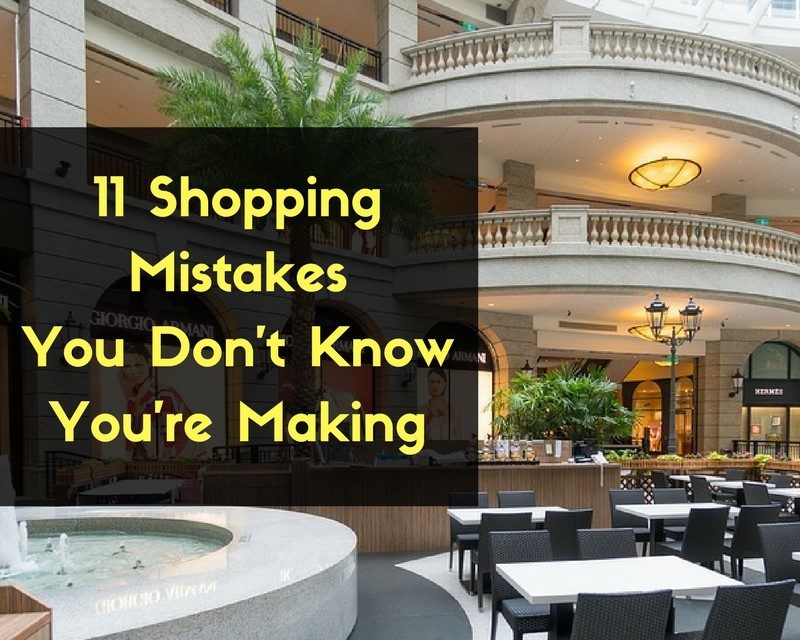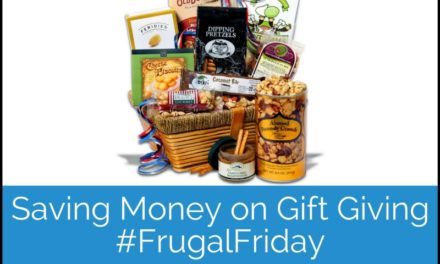Shopping is a central part of our consumer-driven culture, and yet we’re not always the most savvy about it. From compulsive spending to unnoticed money-leaks in our budgets, it’s estimated the average debt of American households is $5,700. This high number can be attributed to many things, including indulgent shopping habits, poor budgeting strategies and impulsive buying. Paying attention to the way we shop and what triggers us to spend is essential to curbing this money-wasting behavior. Here are 11 of the most common shopping mistakes people make and how to stop them.
Skipping Coupons
Understandably, the hesitation to coupon comes from the fear that it takes more time than the money it saves. However, you don’t have to be an extreme couponer or sacrifice your precious free time for extra discounts. If you know you’ll be shopping at a particular store, visit Coupon Sherpa or download their app for applicable discounts.
Many grocers are offering digital coupons through store apps, making it much easier to save during your weekly food runs.
Since you usually have your phone with you, it’s basically like having coupons on-the-go no matter where you shop. While there are ways to save without coupons, technology has made the process much easier.

Failing to Compare Prices
Although it’s convenient to get all your shopping done in one trip, not shopping around for a better deal is likely costing you more.
This is especially true when it comes to bigger purchases like appliances and electronics.
Taking the time to research prices and deals in your area or online can save you a considerable amount of money. When it comes to grocery items, use a tool like Flipp to quickly compare weekly ads to determine who is selling what you’re buying for the best price.
Avoid overpriced grocery items like personal care products and select household goods that can be found for less at Target or Walmart.

Shopping Without a List
Even if you feel like you know what you need, shopping without a list puts you at risk to buy more than you expected, or forget essentials. A key to living frugally is to plan for shopping trips by taking inventory of what you already have and only writing down what you need.
You can also keep track of lists digitally through apps like Google Keep, and share them with members of your household.
This method also helps you create a budget, which makes it easier to pass up items that aren’t necessary. Though lists typically apply to grocery shopping, try making a list for other stores like clothing retailers and craft stores to avoid impulse spending.
Shopping Hungry
Most people know that grocery shopping on an empty stomach is a bad idea.
You’re way more likely to have an over-stuffed cart at the end of your shopping trip if you buy every appetizing item you see. Similarly, you’re more likely to splurge on fast food when you’re out and about shopping for other things.
Avoid the temptation by having a meal before your shopping trips or bring snacks to curb your cravings between meals. You’ll have more energy to shop and it will be easier to stick to your list!

Shopping with Friends
Though shopping is a popular pastime and social activity, you’re more likely to succumb to peer pressure when you shop with friends. Avoid shopping with “enablers,” or people who convince you to buy things you want but don’t need.
Instead, try shopping alone and see how much easier it is to stick to your list and budget. Or, elect a friend to be “shopping police” and restrict you from unnecessary splurging.
Falling for Retail Tricks
Smoothing over the customer and catering to their emotions is a tried-and-true retail trick.
Take the infamous and persuasive nature of car salesmen: Up-selling, flattery and creating a sense of urgency or guilt are all retail tactics that often work on unaware shoppers. Don’t allow yourself to be pressured into unnecessary buys or add-ons.
Instead, discipline yourself to stay focused on what you need and recognize sales strategies for what they are.
Emotional Shopping
The idea that retail shopping can have a therapeutic effect presents a major threat to your budget.
Don’t succumb to splurging if you’re feeling emotional; there are plenty of other ways to cheer yourself up or celebrate an achievement! Shopping with a level head also helps you avoid impulse buys and credit card debt.
If you simply must go shopping to get out of the house or spend time with friends, take note of the things you want but wait before you buy. You may find that your desire for these items diminishes (and often disappears) with time.

Spending More to Earn Rewards
Though rewards programs offer great incentives, avoid overspending just to earn rewards. The same applies for coupon discounts: spending more to meet a savings threshold has the opposite effect and ends up costing you more.
If you think you’ll be tempted by a rewards program, avoid it altogether and stick to your bank credit card, debit card or cash. If you decide to join a rewards program, be sure you’re sticking to your budget and not overspending. The rewards will come to you in time!
Buying in Bulk
Sometimes buying in bulk is a good value, but if you aren’t considering the necessity or per-unit price, it could be costing you. Before you buy any item in a large quantity, determine how frequently your family will use it.
Certain products that get used often and won’t spoil or expire, like toilet paper, are typically smart bulk buys. Food items that won’t get eaten up — or samples that turn into impulse buys — will just go to waste. What’s more, buying in bulk doesn’t guarantee a better price; you have to compare per-unit prices on regular-sized items to ensure you’re getting a discount.
Buying Brand Name
In many cases, buying generic or store brand items can save you up to 30 percent.
Similarly, not comparing prices on different brand names and only sticking to the brand you like best can cost you.
Compare ingredient lists and nutrition panels between products, and be willing to try a different brand for the sake of savings. Single or simple-ingredient products make for the best generic purchases, including flour, sugar, bleach and select canned goods.

Buying for a Desired Lifestyle
It’s easy to allow clothing and accessories to define us when advertising shoves the Joneses down our throats. We all have interests, goals and desired aesthetics, but constantly buying items to sculpt a desired image or lifestyle drains your wallet.
Avoid the temptation to define yourself through the items you buy.
Instead, consider what you need versus what you want. Put aside the superficial, spendy items and instead invest in things that will bring more joy in the long run, such as traveling or paying off debts.
(PIN IT)






